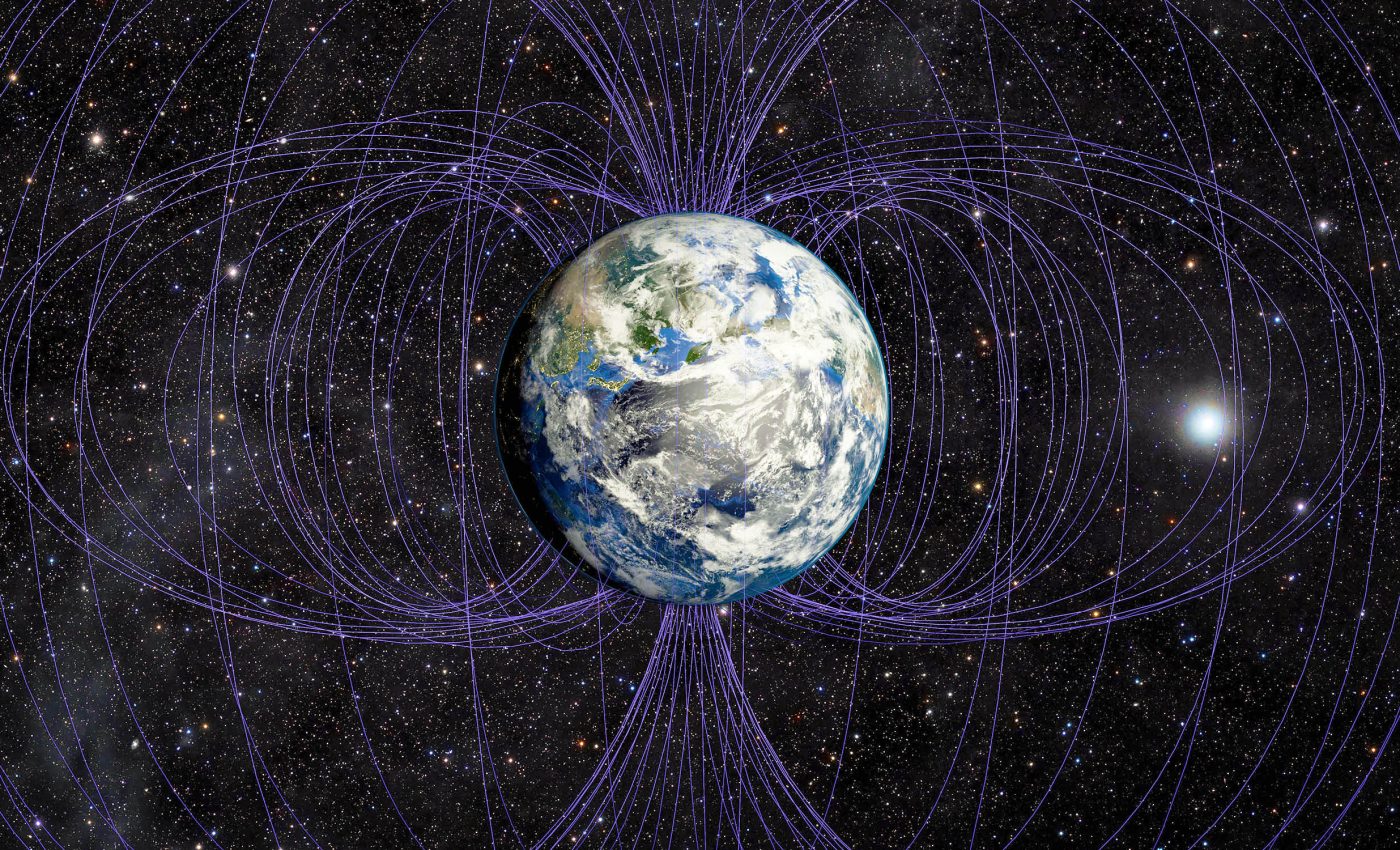
Magnetic North Pole is moving and changing faster than ever, surprising scientists
The magnetic North Pole, a vital navigational anchor for our planet, is far from stationary. Most of us remain blissfully unaware that it shifts constantly under the influence of dynamic forces beneath the Earth’s crust.
However, recent movements have been more extreme than usual, making people take notice. Once steady, this silent sentinel has recently been speeding erratically toward Russia at an unprecedented pace.
Such rapid shifts could have dramatic consequences, disrupting modern navigation systems and, by extension, the way we navigate our daily lives.
What exactly is the magnetic North Pole?
First, let’s make it clear what exactly we’re talking about. The magnetic North Pole is the point on Earth where the planet’s magnetic field points directly downward. This is the direction that your compass needle aligns with when you’re navigating outdoors.
Unlike the geographic North Pole, which is fixed in the Arctic, the magnetic north pole is constantly on the move, drifting several kilometers each year due to changes in Earth’s molten core.
This movement can sometimes throw off navigation systems, requiring updates to maps and compasses to stay accurate.
What makes the magnetic North Pole even more interesting is how it affects both technology and nature.
For example, airplanes and ships rely on accurate magnetic readings for safe travel, while some animals use Earth’s magnetic field to migrate across vast distances.
The northern odyssey: From Canada to Siberia
Ever since we started tracking it, the magnetic North Pole has been on the move. However, its recent behavior is quite out of the ordinary.
Once comfortably located in northern Canada, the pole kicked into high gear in the late 20th century, making its way across the Arctic Ocean by the 1990s.
From there, the pace has increased progressively , peaking at an astonishing 55 kilometers per year during the 2010s.
Presently, it’s hurtling at a slightly reduced but still impressive speed of 25 kilometers per year towards Siberia.
What’s steering the magnetic North Pole?
Intellectually stimulating debates have arisen among scientists trying to decipher the underlying cause of this unusual phenomenon.
Dr. William Brown, a renowned geomagnetic field analyst, identifies three possible culprits behind the magnetic North Pole’s unusual behavior.
First, changes in the flow of molten iron beneath the Earth’s crust could be altering the magnetic field’s strength and direction, as the planet’s outer core dynamics play a crucial role in generating the field in the first place.
Second, high-energy solar particles interacting with the Earth’s magnetosphere, such as during solar storms and winds, might be causing fluctuations in the magnetic field.
Finally, the phenomenon may be linked to the Earth’s history of magnetic pole reversals, which have occurred nearly 200 times over the past 100 million years. The most recent of these reversals occurred approximately 800,000 years ago.
Navigating without a North Star
The potential chaos that the moving magnetic pole can cause is not abstract or confined to scholarly concern.
Our technology is deeply intertwined with magnetic orientations, and any abrupt changes can cause significant turmoil.
Devices like smartphones, cars, and military equipment rely on the World Magnetic Model (WMM), which is designed by the British Geological Survey and NOAA.
This model tracks the pole’s movements and ensures accurate navigation. If the pole’s movement outpaces updates to the WMM, our devices could miscalculate locations and throw our wayfinding abilities into disarray.
Preparing for the polar paradox
Mitigating the potential risks of such a change involves a three-pronged approach: frequent updates to the WMM, expanding research to continue monitoring the Earth’s core dynamics, and raising public awareness.
Through these efforts, industries that rely heavily on magnetic field-based navigation are being prepped for any potential upcoming disruptions.
Gearing up for a world upside down?
While the pole’s movement is no longer as rapid, it remains a crucial area of research.
Scientists from NOAA and other organizations are keeping a close eye on its shifting trajectory, ensuring our technological world is prepared for any seismic shifts in Earth’s magnetic nature.
In the face of a potential world where the poles flip, these insights and precautionary measures could prove indispensable.
So, the magnetic North Pole’s flight towards Russia isn’t just an intriguing natural occurrence. Its implications for our global navigation systems and technologies could be profound and far-reaching.
Magnetic North Pole and Earth’s future
Rapid movement of the magnetic North Pole is not just an issue for technology and navigation but also offers insight into the inner workings of the Earth.
The erratic behavior of the pole reflects what is happening in the dynamic processes deep within our outer core, where molten iron generates a magnetic field.
By studying this phenomenon, scientists can gain a better understanding of Earth’s geodynamo, which is the engine behind the magnetic field that shields us from harmful solar radiation.
The shifting pole also raises questions over the possibility of a full magnetic reversal – a natural process in which the North and South magnetic poles swap places.
While such reversals have happened thousands of times in the Earth’s history, their effects cannot be predicted.
A reversal could temporarily weaken Earth’s magnetic field, meaning that the planet would be exposed to more intense and damaging cosmic radiation, which would affect living organisms, ecosystems and infrastructure.
Monitoring changes in this manner helps researchers keep an eye on the Earth’s interior and also prepares humanity for potential future challenges.
—–
Like what you read? Subscribe to our newsletter for engaging articles, exclusive content, and the latest updates.
Check us out on EarthSnap, a free app brought to you by Eric Ralls and Earth.com.
—–













